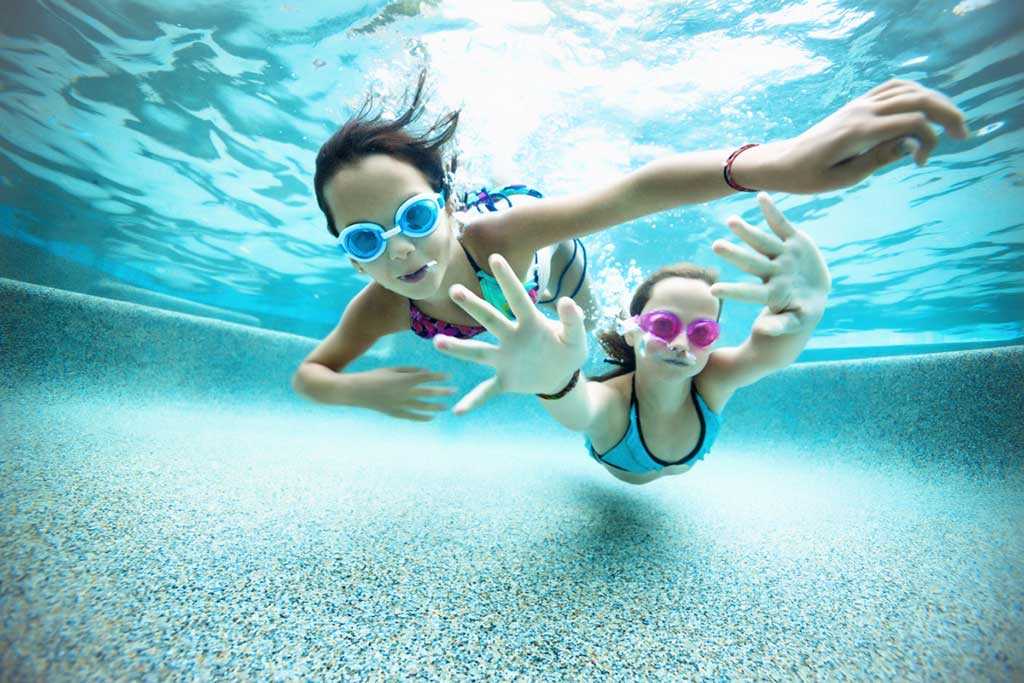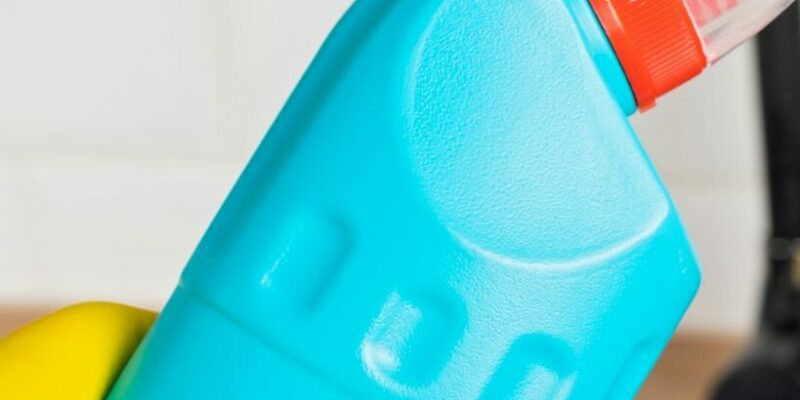Answers to common questions about chlorine and pool safety.
Most people probably wouldn’t want to go swimming in a giant, germ-filled petri dish. But without modern chemistry, that’s what swimming in pools could be like. Even a quick swim in unsanitized water could expose a person to illnesses such as diarrhea, swimmer’s ear and various types of skin infections, including athlete’s foot. Modern chlorine pools ensure a safe and healthy swimming experience.
Chemistry helps fight germs to keep chlorinated pool water sanitized, so swimmers are not exposed to harmful levels of microbes that cause illnesses. How do we know that pool sanitizing chemicals can be used safely?
The Chemistry of Chlorinated Swimming Pools
What does chlorine do in a pool?
Chlorine has several benefits for being added to pools, hot tubs, and spa water. It acts as a disinfectant, killing bacteria, viruses, and other harmful microorganisms which helps to prevent the spread of diseases.
Chlorine also helps to keep the water clear by preventing algae growth and helps to break down dirt, debris, or other substances in the water, keeping the pool safe for enjoyment. Although safe for swimming, you should still avoid swallowing or drinking pool water.
Source: Compound Interest
What experts say about pool chemicals and chlorine safety:
- The U.S. Centers for Disease Control and Prevention (CDC) states that chlorine is added to water to kill germs. Chlorine and pH are the first line of defense against germs that can make swimmers sick, according to CDC.
- Whether you choose chemical products or electrical devices to clean your pool or spa, you must maintain a certain amount of sanitizer to prevent disease-causing microorganisms from multiplying, according to Health Canada.
- Belgian scientists also support chlorine for pool disinfection, stating that chlorine is the best disinfectant currently available, and “there is no evidence that alternatives to chlorine will provide an appropriate solution for the disinfection of swimming pools.” (Superior Health Council of Belgium)
Answering Questions about Chlorine and Swimming Pool Safety
Why is chlorine added to swimming pools?
Chlorine is added to the water to kill germs. When chlorine is in a pool, it forms a weak acid called hypochlorous acid that kills bacteria like salmonella and E. coli, as well as germs that cause viruses such as diarrhea and swimmer’s ear. Chlorine in pools results in no odor and health swimming conditions.
How is chlorine made and where does it come from?
The chlorine in pools is a naturally-occurring chemical element and one of the basic building blocks of matter. Chlorine is produced from ordinary salt, by passing an electric current through a solution of brine (common salt dissolved in water) in a process called electrolysis.
How is pool water chlorinated?
Chlorine for pools is available in various formats and concentrations, each optimized for pool size and type. Pools are sanitized using a variety of chlorine-based compounds including chlorine gas, sodium hypochlorite (liquid bleach), calcium hypochlorite, lithium hypochlorite and chlorinated isocyanurates. When any of these compounds contact water, they release hypochlorous acid (HOCl), the active sanitizing agent.
Saltwater vs chlorine pools: how are saltwater pools different from chlorinated pools?
Both types of pools actually use chlorine. Saltwater pools are chlorine pools in which the chlorine is generated on-site from sodium chloride. Other types of chlorine pools use chlorine to disinfect the water with chlorine tablets or sticks.
Why do pools sometimes have a chemical or chlorine smell?
Healthy pools don’t smell like chemicals. Pool water is often described as smelling like chlorine, but a well-managed pool shouldn’t have an odor. The pool water scent does not come from the chlorine itself but rather from chemical compounds called chloramines, which build up in pool water when it is improperly treated, creating a “pool chlorine smell.”
Chloramines result from the combination of two ingredients: (1) the chlorine disinfectants added to sanitize swimming pools, and (2) perspiration, oils and urine that enter pools from swimmers’ bodies. Chloramines can be eliminated using chlorine in pools. “Shock treatment” or “superchlorination” is the practice of adding extra chlorine to pools to destroy ammonia and the organic compounds that combine with chlorine to make chloramines.
Does chlorine irritate a swimmer’s eyes?
Swimmers might worry “there is too much chlorine in the pool” if, after a swim, their eyes are reddened or irritated. However when pool water is irritating, that is typically a sign that there is not enough chlorine in swimming pool water! Chloramines are the true cause of irritation.
To keep a pool, hot tub or spa safe, the water must be tested on a daily basis, especially when it’s being used a lot. Chlorine in pools keeps eye redness and irritation to a minimum. Learn more about maintaining healthy pools in the video below.
Can swallowing pool water make you sick?
Accidentally swallowing small amounts of pool water is fine, but excessive drinking of pool water should be avoided. Swallowing pool water or getting it up your nose can expose you to bacteria and viruses like E. coli, norovirus, and even parasites like Giardia, Cryptosporidium, and Shigella.
If excessive amounts of heavily chlorinated water are consumed, it can also lead to a number of health complications like stomach cramps, burning in the mouth, a swollen or painful throat, nausea, vomiting, and diarrhea.
How does chlorine kill lice?
The CDC reports that lice are able to survive swimming in chlorinated water and will not result in killing head lice. Head lice are also unlikely to be spread through using swimming pools, as head lice tend to grip firmly to human hair when submerged in water, preventing spread. However, head lice can be spread through sharing pool towels or other items that have been in contact with an infected person’s hair like combs, brushes, hats, and hair bands.




